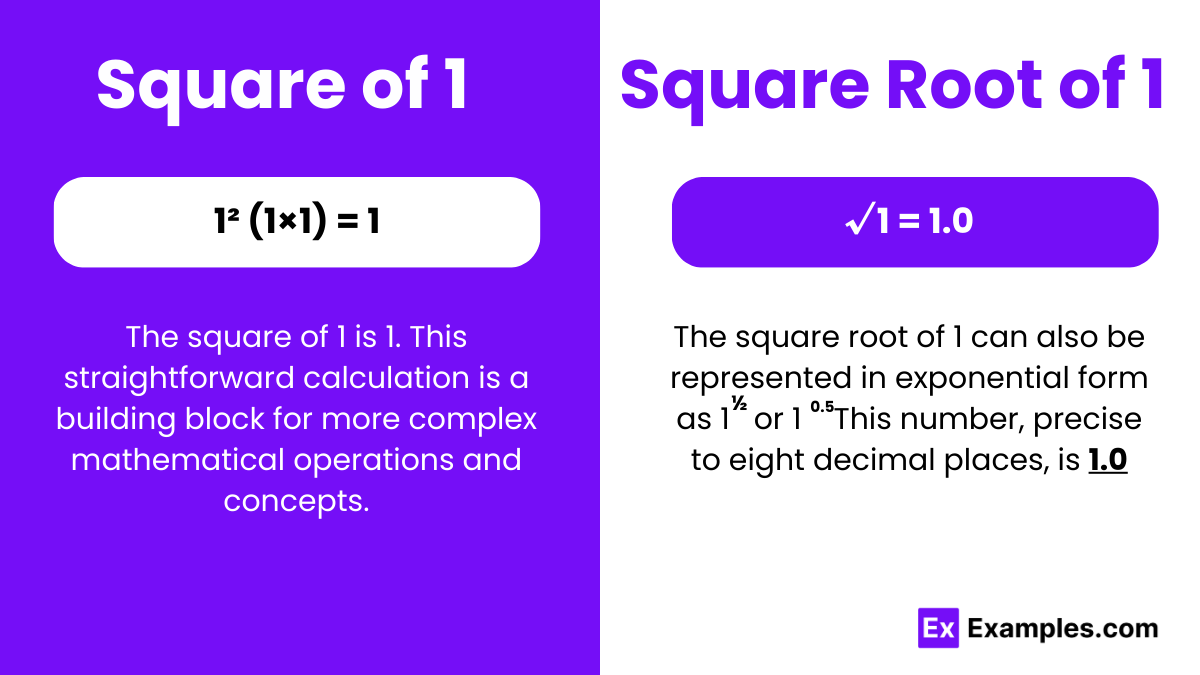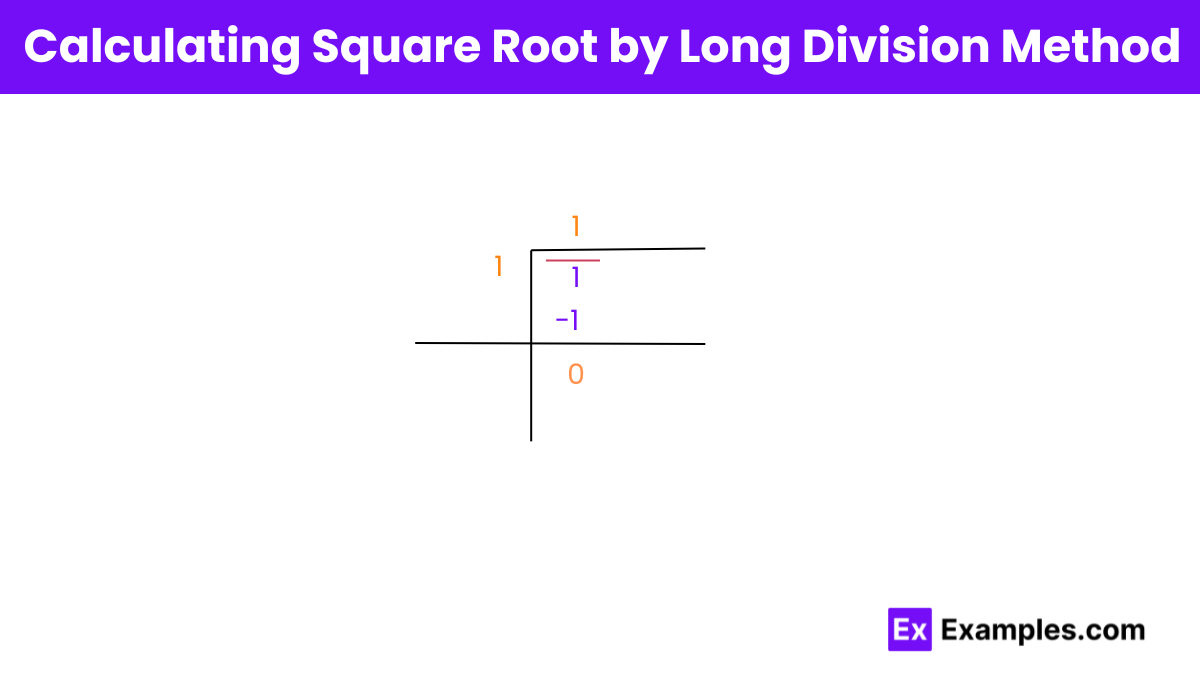What is the square of 1?
1
0
10
15

To calculate the square of 1, you simply multiply 1 by itself:
Therefore, the square of 1 is 1. This straightforward calculation is a building block for more complex mathematical operations and concepts, including algebraic equations, geometric formulas, and statistical models.
The square root of 1 is simply 1. This is because the square root operation asks the question, “What number, when multiplied by itself, gives the original number?” For the case of 1, multiplying 1 by itself (1 × 1) yields 1. Mathematically, this is expressed as 1=11=1. The concept is straightforward and serves as a fundamental example of how square roots work, illustrating that the square root of a positive number can be positive (and in this unique case, the same as the original number).
Exponential Form: 1^1/2 or 1^0.5
Radical Form: √1
A rational number is defined as a number that can be expressed as the fraction a/b where a and b are integers, and b is not zero. The square root of 1 is exactly 1 (√1=1), which can be expressed as a fraction like 1/1, fitting the definition of a rational number perfectly.
To find the value of the square root of 1 (√1) , you can follow this straightforward approach:

Square Root of 1 (√1):
Recognize the operation: Understand that finding the square root of a number involves determining the number that, when multiplied by itself, equals the original number.
Compute: Calculate the square root of 1. Since 1×1 = 1, the square root of 1 is 1.
Interpretation: This means that the length of each side of a square with an area of 1 square unit is 1 unit.
Check: Verify the result by squaring the calculated square root. In this case, 1×1 = 1, confirming that the square root of 1 is indeed 1.
The square root of 1 is 1, because 1×1=1. A perfect square is a number that can be expressed as the product of an integer with itself.
The square root of negative 1 is defined as “i”, where “i” is the imaginary unit. It satisfies the equation i² = -1, a foundational concept in complex numbers.
Yes, √1 can be a value. The square root of 1 is 1, because 1 squared (1×1) equals 1. It satisfies the definition of a square root.
√1 is not imaginary; it is real and equals 1. The confusion might arise with √-1, which is imaginary, denoted as i, defining the basis for complex numbers.
Text prompt
Add Tone
10 Examples of Public speaking
20 Examples of Gas lighting
What is the square of 1?
1
0
10
15
Find the square root of 1.
0
1
2
3
What is the result of 1 squared?
2
3
1
0
If x² = 1, what is the value of x?
1
- 1
0
Both 1 and -1
What is 1 raised to the power of 2?
1
2
0
-1
What is the square of 1 divided by the square root of 1?
0
1
3
4
What is the result when you subtract the square root of 1 from 1?
0
1
2
-1
What is the value of 1 raised to any power?
1
0
2
3
What is the square root of 1 divided by 1?
1
0
-1
-2
What is the sum of the square root of 1 and the square of 1?
0
1
2
3
Before you leave, take our quick quiz to enhance your learning!

